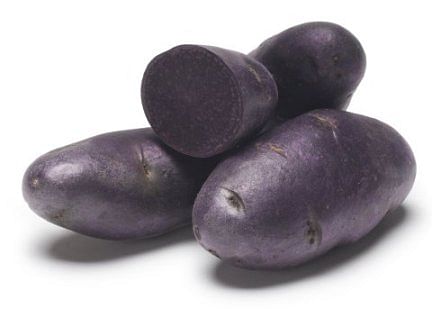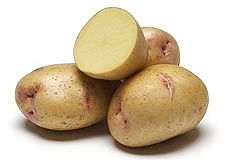In the first known study to address the effects of potato consumption on antioxidant status, oxidative stress and inflammation in humans, a team of research scientists worked with a group of Washington adult males to test the hypothesis that antioxidants from colored potatoes would decrease susceptibility to chronic diseases.
In the six-week study, three groups of 12 healthy, 18- to 40-year-old males from Washington State University and the surrounding communities consumed 150g of cooked potatoes—white-, yellow- or purple-fleshed—once a day. Blood tests were performed at the beginning and at six weeks to analyze for indications of antioxidant status, oxidative stress, and inflammation.

Purple Potatoes (variety Purple Pelisse)
To maximize retention of bioactive compounds, whole potatoes were boiled in a steam kettle for about 25 min, immediately cut into quarters, frozen in sealed plastic bags, and stored at -35C (-31F) until use. To minimize destruction of the bioactive compounds, potato recipes used quick-cook methods such as soups, mash and stir-fry.
The potato is the most commonly consumed vegetable in the US. In addition to high concentrations of vitamin C and iron, the highly-colored potato varieties are rich in antioxidants, including phenolic acids, anthocyanins and carotenoids. Consumption of foods rich in antioxidants is associated with a lower incidence of chronic diseases such as cardiovascular disease, atherosclerosis, rheumatoid arthritis and cancer.

Yellow flesh potatoes: Yukon Gem
Overall, the scientists documented that consumption of both yellow and purple potatoes decreased oxidative damage and inflammation in participants compared with those who consumed white potatoes. “This offers consumers an improved nutritional choice in potato consumption,” the report concluded. “The potential physiological benefits of consuming pigmented potatoes should be explored in persons with chronic disease.” Not to mention women.












